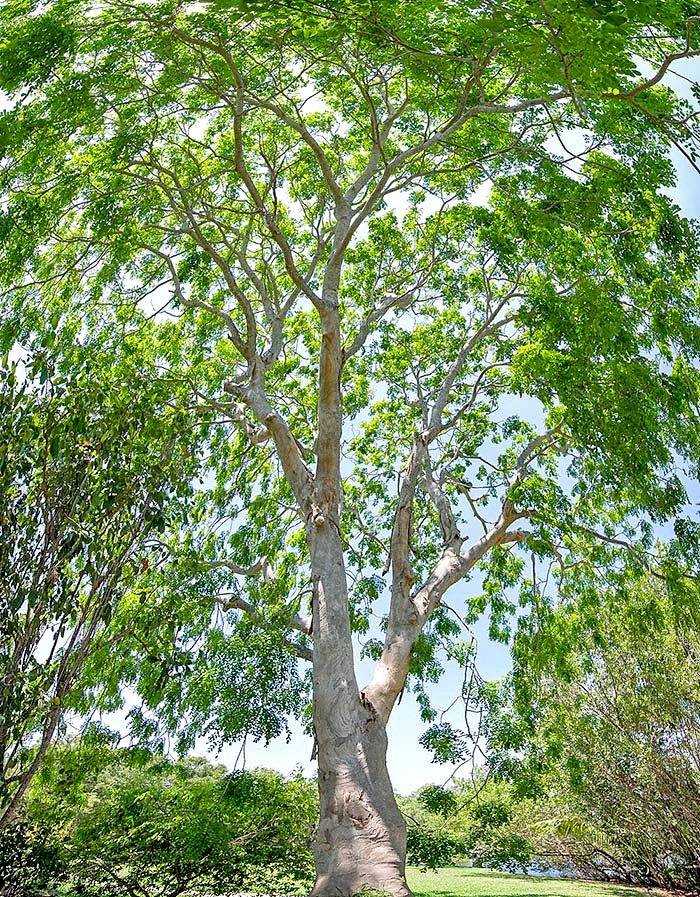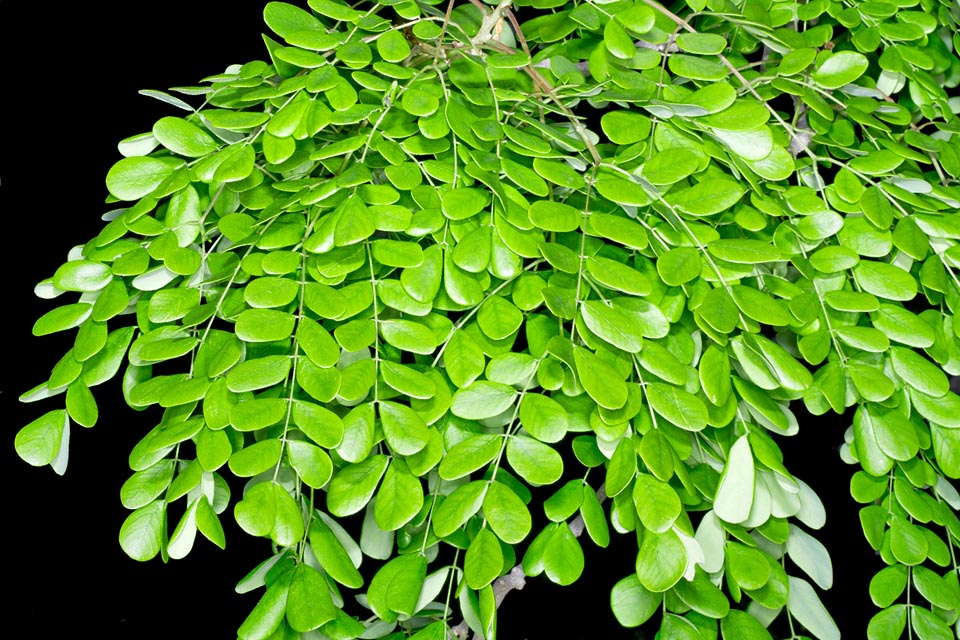Family : Fabaceae

Text © Pietro Puccio

English translation by Mario Beltramini

Endemic to Cuba, the Pseudosamanaea cubana reaches the height of 20 m with a 50-70 cm trunk © Giuseppe Mazza
The species is endemic to Cuba, where it grows on ophiolitic soils in the south-eastern part of the island in the dry evergreen forests and in the savannahs, close to the coast at low altitudes.
The name of the genus is the combination of the Greek prefix “ψευδο-“ = false and of the genus Samanea; the specific Latin name refers to the place of origin, Cuba.
Common names: aimiqui, bacona, capanema, carbonero de costa (Cuba).
The Pseudosamanea cubana (Britton & P. Wilson) Barneby & J.W. Grimes (1996) is an up to 20 m tall tree with trunk, of 50-70 cm of diameter, with pale grey bark, smooth, tending to slightly fissure with the age.
The leaves, on a 2-3 cm long petiole, are alternate, bipinnate, 15-28 cm long, with 3-5 pairs of pinnae, 5-14 cm long, formed by 5-8 couples of obovate-elliptic leaflets with rounded apex, 1,5-3,5 cm long and 1-2 cm broad, of intense green colour and glabrous above, paler and slightly pubescent below.
Axillar inflorescences, on a 5-10 cm long peduncle, in compound umbel, bearing numerous flowers, on a tomentose pedicel about 0,6 cm long, of whitish colour.
Campanulate calyx, about 0,6 cm long, with 5 unequal ovate-lanceolate teeth long about 1 mm, infundibuliform corolla, 1-1,5 cm long, tomentose, with 5 unequal lanceolate lobes, 2-4 mm long, and numerous stamens about 3 cm long.
The fruit is a compressed brown linear legume, pubescent 12-25 cm long and 2-2,5 cm broad, containing 15-25 oblong seeds, slightly compressed, 0,6-0,7 cm long and 0,3-0,4 cm broad. It reproduces by seed, previously kept in water for two days, in draining loam maintained humid at the temperature of 25-28 °C.
Species exclusively for tropical and subtropical climates, humid as well as semi-arid, as it does not bear temperatures close to 0 °C.

Intense green leaflets, paler and pubescent below. Species at risk of extinction in nature due to the excessive exploitation of the wood and the expansion of the cultivations © Giuseppe Mazza
The wood, of pale chestnut colour and of good quality, is utilized since long in carpentry, for fixtures, sleepers, agricultural tools and commonly used craft items.
The excessive exploitation for such purpose and the deforestation for the expansion of the agricultural activities have however led to a continuous decrease of adult specimens, menacing its survival, that has obliged the local authorities to take actions for its safeguard: the species has been inserted in the red list of the IUCN (International Union for the Conservation of Nature) as “vulnerable” (species at risk of extinction in nature).
Synonyms: Albizia cubana Britton & P. Wilson (1928); Pithecellobium bacona Urb. (1928).
→ To appreciate the biodiversity within the family of FABACEAE please click here.
